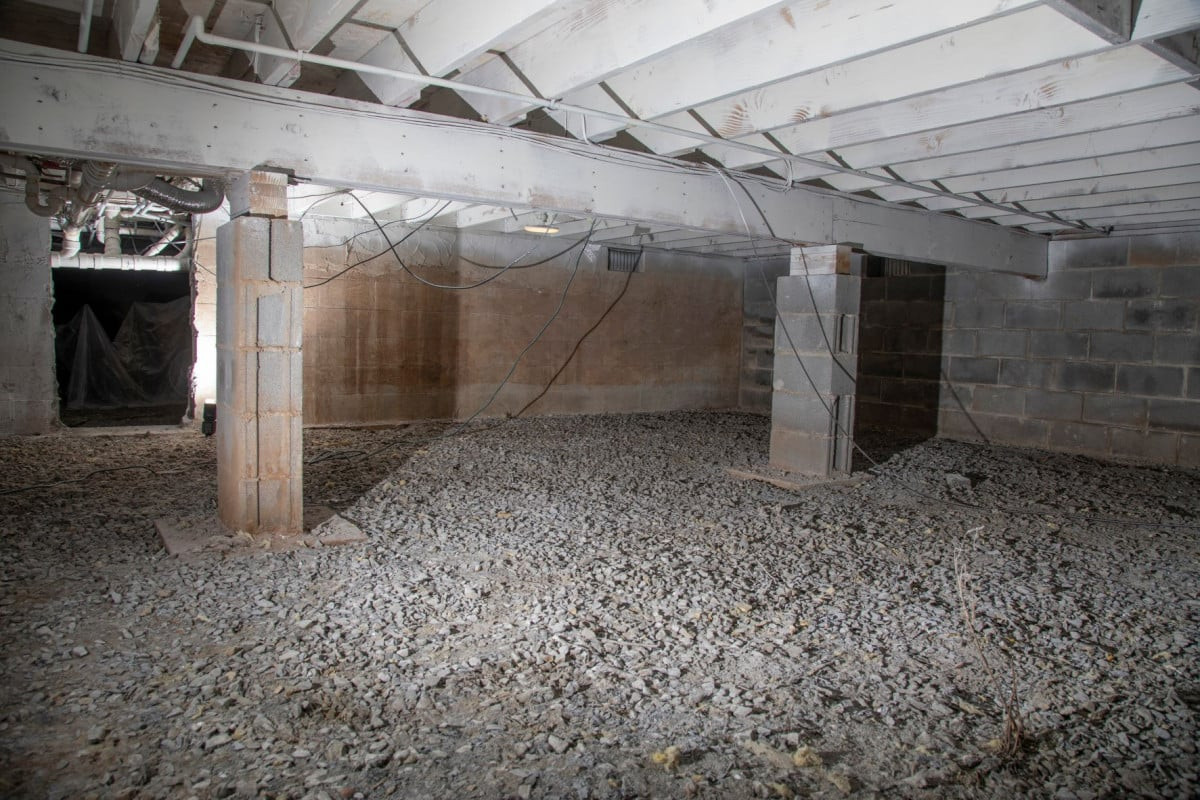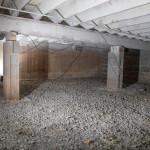Crawlspace waterproofing is a critical aspect of maintaining the health and structural integrity of homes, particularly in regions prone to high humidity, heavy rain, or fluctuating water tables. Despite being out of sight, crawlspaces play a vital role in the overall stability and air quality of a home. If left unprotected, crawlspaces can accumulate moisture, leading to a host of problems such as mold growth, wood rot, pest infestations, and even structural damage. This article explores the various methods of crawlspace waterproofing, the benefits of keeping your crawlspace dry, and why professional installation is essential for long-term effectiveness.
The Importance of Crawlspace Waterproofing
Crawlspaces are typically found in homes where the foundation is slightly elevated off the ground, creating a small, enclosed space between the earth and the first floor. This space is often used for storing utilities like plumbing, electrical wiring, or HVAC systems. However, crawlspaces are also highly vulnerable to moisture, as they are often below or at ground level, making them susceptible to water infiltration from rain, groundwater, or even condensation.
Without proper waterproofing, excess moisture can lead to several issues:
- Mold and Mildew Growth: Moisture creates the perfect environment for mold and mildew to thrive. Mold can spread quickly in dark, damp crawlspaces, causing structural damage and health problems for the home’s occupants.
- Wood Rot: Excess moisture can cause wooden beams and joists in the crawlspace to rot, compromising the structural integrity of the home.
- Pest Infestations: Wet, humid crawlspaces are attractive to pests like termites, rodents, and insects, which can damage the home’s foundation and insulation.
- Increased Energy Bills: A damp crawlspace can also affect the energy efficiency of a home, leading to higher heating and cooling costs as moisture seeps into the living spaces above.
Waterproofing the crawlspace is essential not only for protecting the home’s foundation but also for improving indoor air quality and ensuring a healthy living environment.
Common Causes of Crawlspace Water Problems
Before implementing any waterproofing measures, it’s crucial to understand what causes water to accumulate in a crawlspace. Identifying the root cause will help determine the best waterproofing solution.
1. Poor Drainage
One of the most common causes of crawlspace moisture is poor drainage around the home. If rainwater or groundwater is not properly directed away from the foundation, it can accumulate around and seep into the crawlspace. This is often the result of improper grading, clogged gutters, or inadequate downspouts.
2. High Water Table
Homes built in areas with a high water table are at greater risk of water infiltration. When the water table rises during heavy rain or snowmelt, groundwater can seep into the crawlspace, causing persistent dampness.
3. Condensation
Condensation occurs when warm, humid air enters a cooler crawlspace. This is particularly common in homes located in humid climates or during the summer months when outdoor humidity levels are high. The moisture from condensation can lead to mold growth and wood rot if not addressed.
4. Plumbing Leaks
Undetected plumbing leaks, whether from faulty pipes or leaky appliances, can introduce a significant amount of water into a crawlspace. Over time, even a small leak can cause extensive damage if left unchecked.
5. Inadequate Ventilation
Historically, crawlspaces were often vented to allow airflow and prevent moisture buildup. However, vented crawlspaces can actually exacerbate moisture problems by allowing humid air to enter. Without proper ventilation and moisture control, crawlspaces can become damp and musty.
Crawlspace Waterproofing Methods
There are several methods available to waterproof crawlspaces, each designed to address specific moisture problems. The choice of method depends on the severity of the moisture issue, the condition of the crawlspace, and the overall goals for the space. Below are some of the most effective waterproofing methods for crawlspaces:
1. Crawlspace Encapsulation
Crawlspace encapsulation is one of the most effective methods for controlling moisture and preventing water infiltration. This process involves sealing the entire crawlspace with a heavy-duty vapor barrier, typically made from thick polyethylene plastic. The vapor barrier is installed on the floors, walls, and sometimes the ceiling of the crawlspace, creating a sealed environment that prevents moisture from entering.
- Vapor Barrier: The vapor barrier acts as a shield against moisture, preventing water vapor from the soil and surrounding air from entering the crawlspace. This helps to control humidity levels and reduce the risk of mold, mildew, and wood rot.
- Sealing Vents and Openings: As part of the encapsulation process, all crawlspace vents and openings are sealed to prevent humid air from entering. This eliminates one of the primary sources of moisture and improves the overall air quality of the space.
Encapsulation not only helps to keep the crawlspace dry but also improves energy efficiency by creating a more controlled environment beneath the home. Many homeowners report lower energy bills after encapsulating their crawlspace, as it prevents the exchange of humid air that can affect the temperature of the living spaces above.
2. Interior Drainage Systems
If a crawlspace has existing water infiltration problems, an interior drainage system may be necessary to manage the water. This system works by collecting water that enters the crawlspace and directing it to a sump pump, which then removes the water from the home.
- French Drain: A French drain is commonly installed along the perimeter of the crawlspace. This involves digging a trench around the edges of the crawlspace and placing a perforated pipe inside the trench. The pipe collects water from the surrounding soil and redirects it to the sump pump.
- Sump Pump: A sump pump is a crucial component of an interior drainage system. It is installed in a pit at the lowest point of the crawlspace. As water collects in the pit, the sump pump activates and pumps the water out of the crawlspace and away from the foundation. Modern sump pumps often include backup batteries to ensure they continue to function during power outages, which are common during storms.
Interior drainage systems are particularly effective in areas with high water tables or homes that experience regular water infiltration.
3. Dehumidifiers
Installing a dehumidifier in the crawlspace is an effective way to control humidity levels, especially in encapsulated crawlspaces. Dehumidifiers remove excess moisture from the air, preventing condensation and reducing the risk of mold and mildew growth. High-quality, energy-efficient dehumidifiers are designed to handle the unique conditions of crawlspaces and provide continuous moisture control.
Dehumidifiers are often used in combination with other waterproofing methods, such as encapsulation or drainage systems, to ensure comprehensive moisture management.
4. Grading and Exterior Drainage
Proper grading around the home is essential for preventing water from pooling near the foundation and seeping into the crawlspace. Grading involves shaping the ground so that it slopes away from the house, directing rainwater and runoff away from the foundation.
In addition to grading, exterior drainage systems such as French drains or swales can be installed to collect and divert water before it reaches the crawlspace. These systems work to manage groundwater and prevent it from accumulating around the foundation.
5. Waterproofing Foundation Walls
If water is entering the crawlspace through the foundation walls, it may be necessary to apply waterproofing products to the exterior of the foundation. This process typically involves excavating around the foundation to expose the walls and applying a waterproof membrane or sealant to prevent water from penetrating.
Waterproofing the foundation walls is particularly useful in areas with high groundwater levels or heavy rainfall.
The Benefits of Crawlspace Waterproofing
Investing in crawlspace waterproofing offers numerous long-term benefits for homeowners. Not only does it protect the foundation and structural integrity of the home, but it also improves indoor air quality and energy efficiency.

1. Improved Indoor Air Quality
Crawlspaces are directly connected to the home’s living spaces through what is known as the “stack effect,” where air from the crawlspace rises into the upper levels of the home. If the crawlspace is damp or filled with mold spores, these contaminants can enter the home’s air, leading to poor indoor air quality and potential health problems. Waterproofing the crawlspace eliminates the moisture source, reducing the likelihood of mold growth and improving the overall air quality in the home.
2. Protection Against Structural Damage
Water infiltration in the crawlspace can cause significant damage to the home’s foundation and support beams. Over time, excess moisture can lead to wood rot, rusting of metal components, and even shifting or settling of the foundation. By waterproofing the crawlspace, homeowners can prevent these issues and protect the structural integrity of their home.
3. Energy Efficiency
A properly waterproofed crawlspace is more energy-efficient than a damp, vented one. By sealing the crawlspace and controlling humidity levels, homeowners can prevent heat loss in the winter and reduce the workload on their HVAC systems. This results in lower energy bills and a more comfortable living environment.
4. Increased Home Value
Waterproofing the crawlspace is a valuable investment that can increase the resale value of the home. Potential buyers are more likely to be interested in a home with a dry, well-maintained crawlspace, as it indicates that the property has been properly cared for and is free from moisture-related problems.
5. Peace of Mind
Perhaps one of the greatest benefits of crawlspace waterproofing is the peace of mind it provides. Homeowners can rest assured that their home is protected from water damage, mold, and pests. This not only reduces the likelihood of costly repairs but also improves the overall comfort and safety of the home.
Contact the Professionals at Budget Dry Waterproofing Today! 203-421-8560





